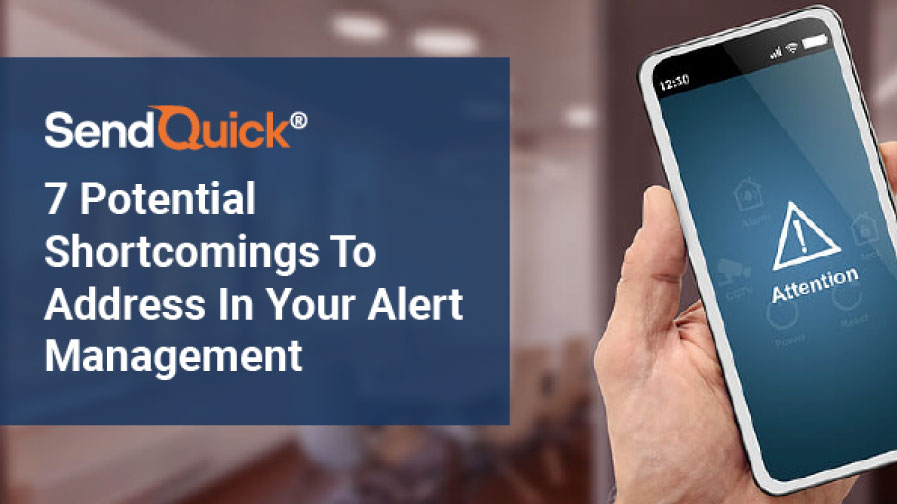An alert management system is crucial for monitoring and maintaining IT systems. It enables organizations to quickly learn about and identify issues to facilitate a timely response that minimizes service degradation and disruption. However, there are times when these systems are not as effective as they could be, often leading to critical problems that warrant immediate attention being hidden in a sea of alerts.
Whether running a large enterprise network or a small-business IT environment, your alert management system must ensure that each alert reaches the relevant persons in your IT staff. And this is only one of the many things it ought to be doing. With the increasing complexity of modern businesses, alert management systems also need updated features to remain effective.
Find out if the following key functionalities you need are missing in your current alert management platform.
1. Alert de-duplication
Alert monitoring systems may continually ping the IT team with alerts from various sources, many of which are just duplicates. The volume of these repetitive alerts from varying tools will eventually reach a point wherein it compromises the team’s ability to properly manage, optimize, and secure services for users and the business’s customers. Reworking on the same alerts will take a toll on the IT team, hence the need for an alert de-duplication feature. Filtering out duplicate alerts is crucial to reducing alert noise, and it starts with organizing and grouping alerts according to well-defined de-duplication rules.
2. Performance assurance
Although quick and efficient at sending alerts, can your alert management tool also ensure that all your applications are performing optimally and delivering the best user experience and service quality? From the perspective of alert management, this entails constantly monitoring applications for optimal uptime. Keeping track of not just outages but also uptime and availability help resolve many potential issues and improve the overall user experience.
3. Alert automation
Can your alert management system use rule-based algorithms to automate alerts? Alert automation lets users configure custom escalation policies based on availability to maintain monitoring processes and systems without dedicating IT resources. As a result, it becomes easier to improve response times and swiftly address problems before they lead to unwanted delays or downtimes. Ultimately, the benefits of alert automation affect the IT team and the overall business as it streamlines operations, increases efficiency, and enhances productivity.
4. Alert centralization
Pooling alerts in one centralized location and smartly routing them based on expert skill sets and availability is the ideal solution to stay on top of alerts. If your alert management system sends everything to all IT team members, it is inefficient. The system must be automated to direct alerts to the relevant personnel and handle the process of triaging these alerts as they arrive. A centralized dashboard lets you have real-time situational visibility over every alert that comes in, allowing you to better organize alerts, track alert history, and address alerts more efficiently.
5. Anytime, anywhere notifications
Alerts can come in anytime, even when IT personnel are away from their desk. Moreover, the prevalence of remote work culture today means many employees now work in disparate locations, not just in the office. As such, alert management systems must be capable of sending notifications through different channels like SMS, email, social messenger platforms, work collaboration tools, and more. By having alert and status reporting communicated in different ways, IT managers and teams gain full visibility over the company’s systems. In turn, this allows them to assign alerts based on availability and scheduling for faster incident response.
6. Seamless API integrations
Given the increasing number of software solutions businesses employ today, alert management solutions should allow for easy integration with publicly available APIs. This essential feature lets IT teams integrate the alerting system with the company’s in-house solutions and other third-party systems to build an automated and fully-integrated alert response workflow.
7. Alert prioritization
Enterprise environments typically generate hundreds to thousands of alerts in just a short time. Thus, having a suppression and filtering feature in your alert management system is necessary to improve alert-handling efficiency by preventing information saturation and overload. If low and high-priority alerts end up mixing on the dashboards, it will be much harder to spot alerts that require immediate attention amid all the clutter. Alert prioritization filters ensure IT teams do not waste time on low-priority alerts by suppressing them instead of disabling them entirely.
Due to the complex and agile nature of enterprise environments, alert management systems must be equally efficient and flexible at the very least to keep up with their demands. By making sure your system has all the essential features, you can better maximize your IT team’s time and empower them to address issues before they get out of hand. Moreover, you can save them from alert fatigue and provide your organization with a solid foundation for business continuity.
Conclusion
If your existing alert management tool is missing some or many of the features above, it may be time to switch to a better solution like SendQuick SMS gateway. From centralized alarms, real-time alerts and multi-channel notifications to multiple integration methods, SendQuick’s solutions let you quickly notify the right people about critical issues and avoid alert fatigue in your organization.
To learn more about our enterprise messaging solutions, head to our solutions page or contact us to speak with a SendQuick expert.


